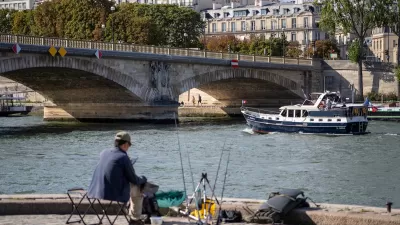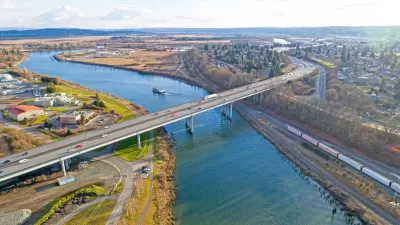A voluntary program of incentives for land owners along the two rivers in Oregon, the Mckenzie River east of Eugene and the Rogue River near Medford, provides incentives for maintaining natural conditions along the river bed.
Devan Schwartz reports on a pair of programs meant to deliver improvements in water quality along two rivers in Oregon.
The first example is the Voluntary Incentives Program, led by the Eugene Water & Electric Board (EWEB). Under the pilot project landowners along the McKenzie River, “would be paid for EWEB to have access to a small swath of land near the river. That swath would then managed for the landowners to improve or maintain the habitat.”
The Medford program, launched in 2012, is called a thermal trading system, arising out of a need for alternatives for expensive proposals to cool the river for salmon habitat.
“The river was at risk of becoming too warm for salmon and falling short of federal clean-water standards. Medford considered installing two chillers to cool the water. That would have cost about $15 million.
Instead, Medford launched a program in 2012 that pays between $100 and $300 per acre for easements from landowners to plant trees on their property. The $8 million cost for the program is just more than half that of the chillers.”
Not everyone agrees about how effective voluntary programs like these are, and some have called for more comprehensive programs of stream protection.
FULL STORY: Improving River Health With Natural Infrastructure And Incentives

Alabama: Trump Terminates Settlements for Black Communities Harmed By Raw Sewage
Trump deemed the landmark civil rights agreement “illegal DEI and environmental justice policy.”

Study: Maui’s Plan to Convert Vacation Rentals to Long-Term Housing Could Cause Nearly $1 Billion Economic Loss
The plan would reduce visitor accommodation by 25% resulting in 1,900 jobs lost.

Why Should We Subsidize Public Transportation?
Many public transit agencies face financial stress due to rising costs, declining fare revenue, and declining subsidies. Transit advocates must provide a strong business case for increasing public transit funding.

Paris Bike Boom Leads to Steep Drop in Air Pollution
The French city’s air quality has improved dramatically in the past 20 years, coinciding with a growth in cycling.

Why Housing Costs More to Build in California Than in Texas
Hard costs like labor and materials combined with ‘soft’ costs such as permitting make building in the San Francisco Bay Area almost three times as costly as in Texas cities.

San Diego County Sees a Rise in Urban Coyotes
San Diego County experiences a rise in urban coyotes, as sightings become prevalent throughout its urban neighbourhoods and surrounding areas.
Urban Design for Planners 1: Software Tools
This six-course series explores essential urban design concepts using open source software and equips planners with the tools they need to participate fully in the urban design process.
Planning for Universal Design
Learn the tools for implementing Universal Design in planning regulations.
Smith Gee Studio
Alamo Area Metropolitan Planning Organization
City of Santa Clarita
Institute for Housing and Urban Development Studies (IHS)
City of Grandview
Harvard GSD Executive Education
Toledo-Lucas County Plan Commissions
Salt Lake City
NYU Wagner Graduate School of Public Service





























